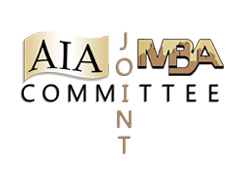
Project Collaboration Best Practices
Project Collaboration Best Practices
Chapter 2: Establishing the Culture of Collaboration
“Owners cannot change building professional’s education, but they can provide leadership in changing the dynamics of information sharing and innovation.”
The Owner’s Dilemma by Barbara White Bryson
Collaboration is transforming the construction industry. The practice of establishing a culture of teamwork and collaboration can be one of the most challenging, but most important, aspects of a project. The expectation of collaboration must be stated clearly by the Owner early on in the project development, even prior to project team selection. It is critical that the Owner selection committee establish this as one of the primary drivers of the selection process, setting the foundation for a truly collaborative project.
On the majority of projects, it is the intent of a project team to have a truly collaborative and successful project. This may or may not happen and is dependent on various factors: experience of the team, personalities of individuals, processes established, technology applied, project delivery method, agreement and contract language, and Owner expectations. Unfortunately, we are reminded much too often of the finger pointing, adversarial relationships, personality conflicts, and lack of respect and trust that exist on many projects. An Owner must consider these actions unacceptable and establish a commitment by the team to focus on a positive and productive environment.
Regardless of the delivery method, the Owner stated expectation of teamwork as a core value can have a positive impact on the project. It is our recommendation that the following core collaboration principles be established by the Owner’s leadership on any project: respect, trust, transparency, reliable promising, and continuous improvement. This will create a more positive and innovative project environment that will influence the behavior of the team. This culture will ensure that a project team provides the best solution for a given problem, maximizing the value of the end product. As we explore how the Owner can establish this preferred behavior, there are four key areas to creating this culture on a project: internal, project team, project organization/framework, and recognition.
Internal: To create a more collaborative project environment, we believe that education and development of internal project leadership can greatly enhance the effort. A current trend in the industry is a move towards Integrated Project Managers (IPM), who would have the skills to encourage and empower teams to more successfully execute projects. They would also have the ability to continuously drive innovation and track team performance. More on this concept can be found through the Lean Construction Institute offerings.
Project Team: For projects with a more integrated approach, a core selection criteria of the project team must include an evaluation of the proposed individuals experience and expertise. An evaluation of the teamwork skills of the proposed individuals should be a focus during the selection process, along with evaluating the integrative culture of their respective firms. The very root of successful collaboration is in the make-up of the project team. Changes must be made to the team if the behavior begins to move towards a more traditional approach.
Project Organization/Framework: The Owner must establish a project framework to nurture teamwork, promote Lean principles, and monitor performance from the executive team to the trades in the field. A step-by-step process for optimizing team collaboration with enhanced results on a project is shared in Chapter 4. This team development process, led by a designated Project Coach, has been used on numerous successful projects. Through surveys of participants and process analysis, many feel this facilitated collaboration has had a positive impact on the projects. The concept and duties of a dedicated Project Coach will be explored.
Recognition: Continuous reward and praise of the application of collaborative principles by the project team must be recognized formally or informally throughout the project. This will solidify the learned behavior and promote this preferred culture on a project.
The commitment and expectation to discover the benefits of enhanced collaboration can be a primary driver of success on design and construction projects. The establishment of the culture of collaboration on a project should be an early requirement and, once achieved, project execution will become easier.
Establishing the Culture of Collaboration
A Resource Guide to Enhance the Level of Collaboration on Projects, Regardless of Delivery Method.
About Us | Best Practices Guides | Glossary | Hot Topics | Contact | Home
© 2023 AIA MBA Joint Committee